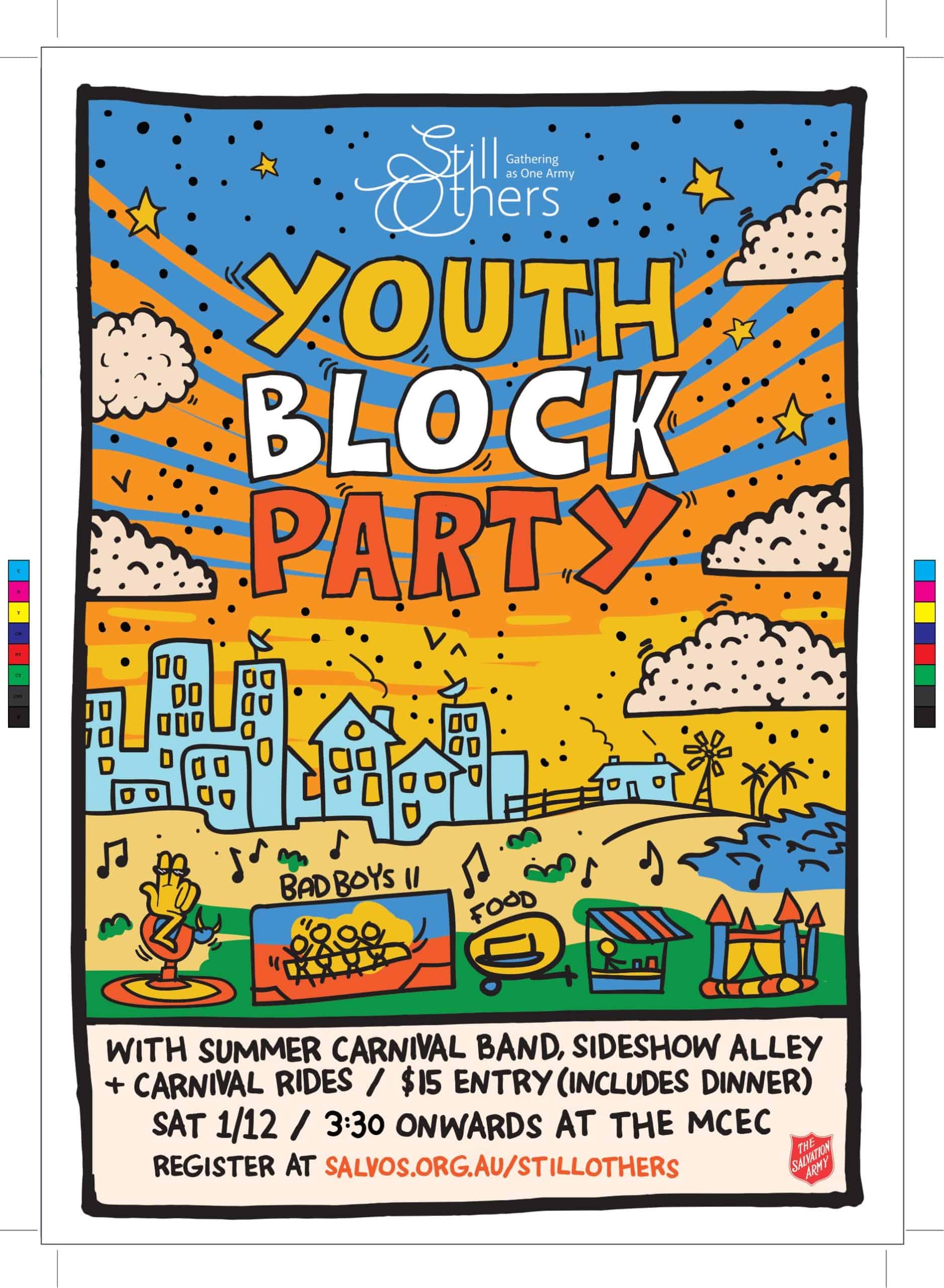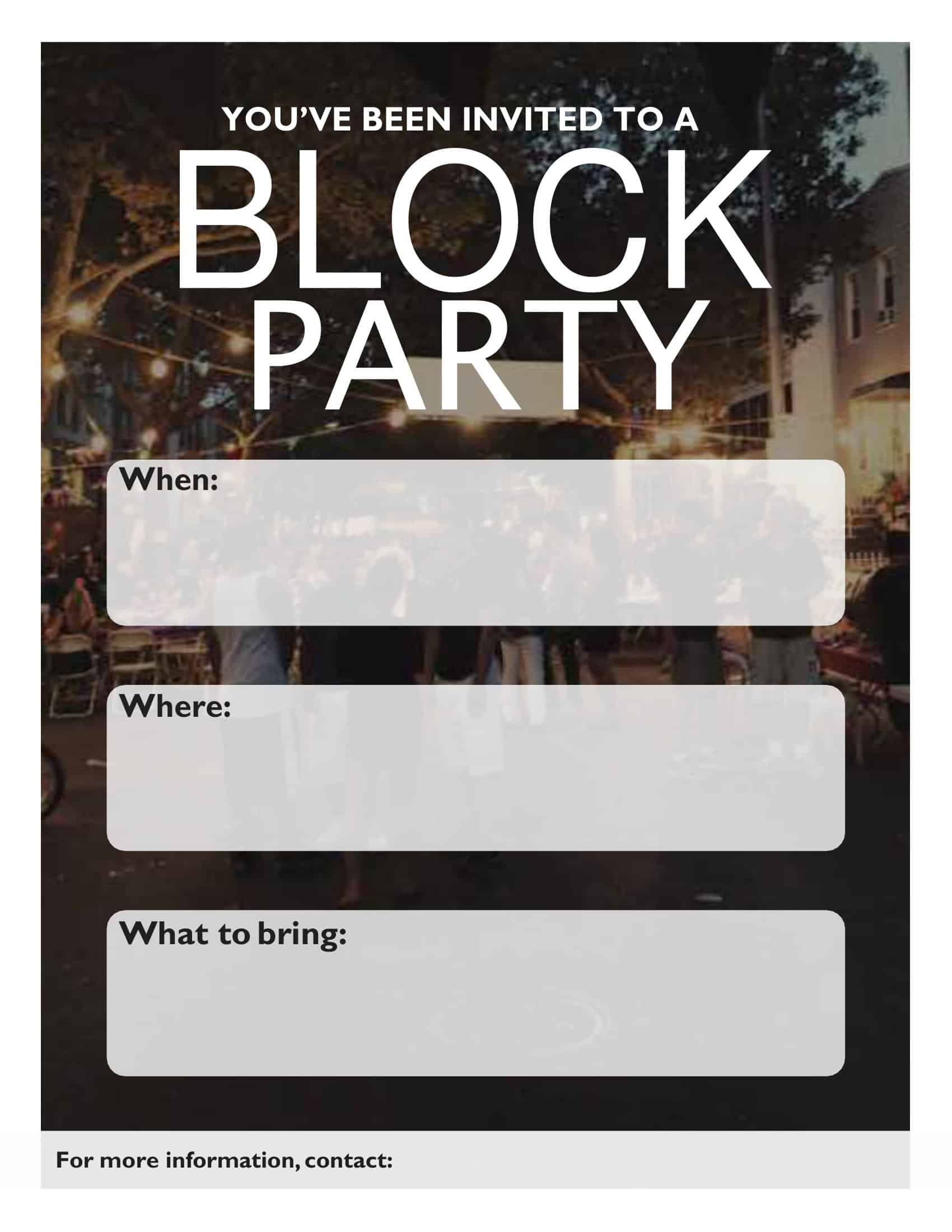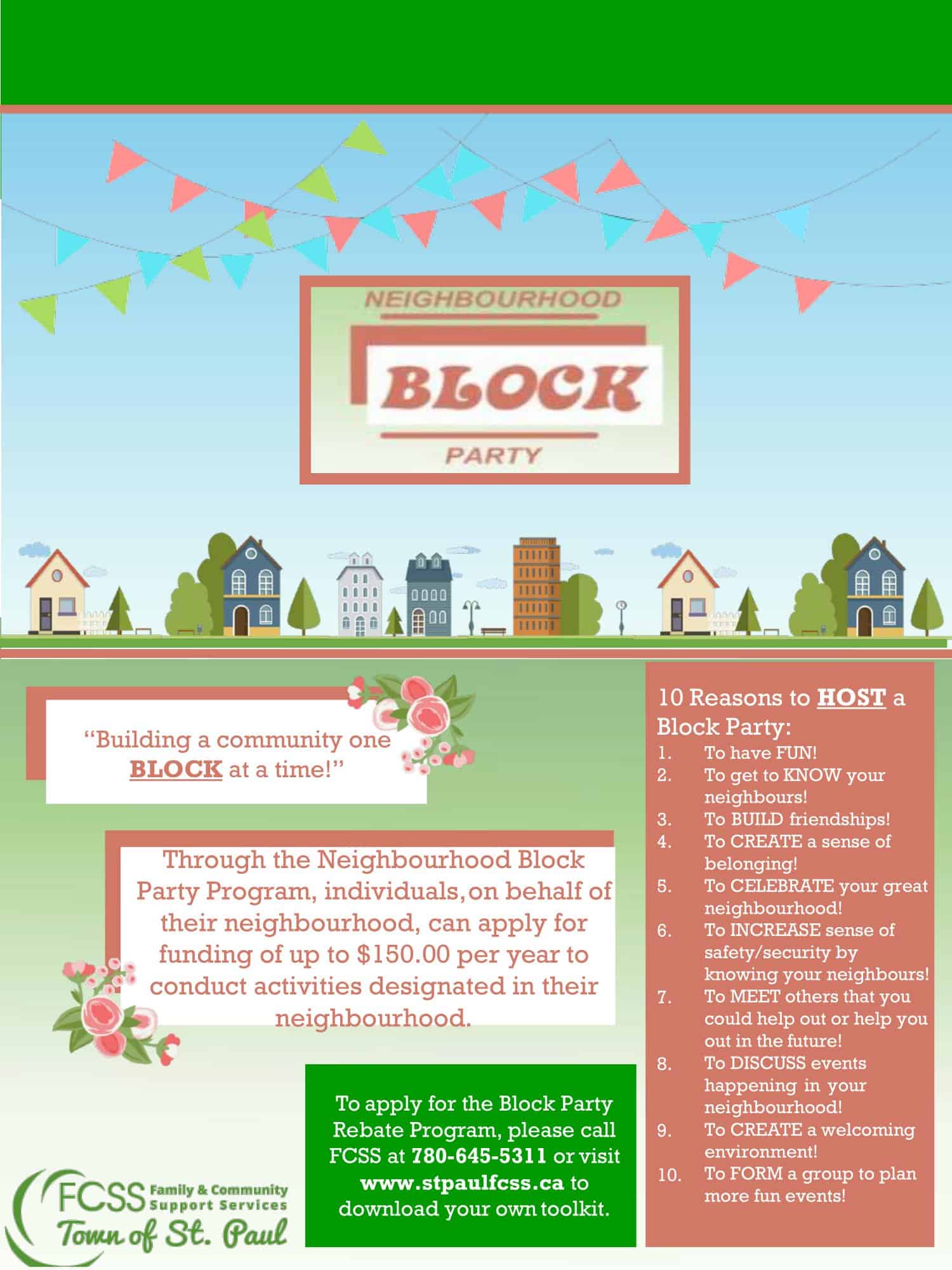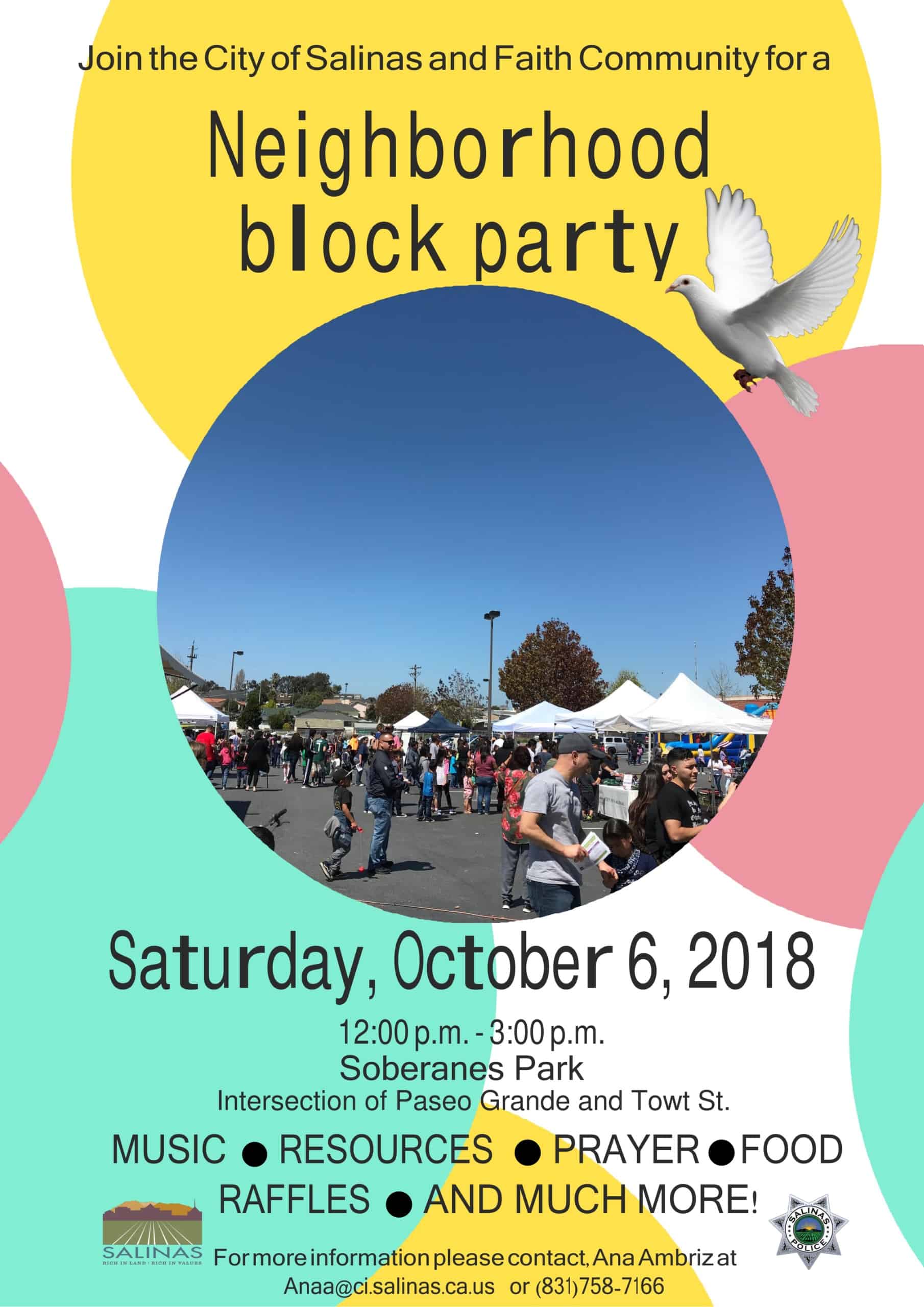Bringing neighbors together for fun and community is what block parties are all about. Creating eye-catching block party flyers ensures everyone in the neighborhood gets the details about your upcoming event. In this article, we’ll explore handy tips for throwing a successful block party.
We’ll also provide free, printable flyer templates to spread the word in style. With a customized flyer that generates buzz, you can look forward to an unforgettable event drawing the whole block out to mingle. Let’s get started designing festive flyers to get your neighbors excited for some old-fashioned neighborhood fun.
Table of Contents
What is a Block Party Flyer Template?

A block party flyer template is a pre-designed flyer layout that can be customized with details about an upcoming neighborhood block party event. Block party flyer templates contain decorative backgrounds, borders, text boxes, and image placeholders that allow easy editing to advertise a specific block party. Users can simply update the template with party specifics like the date, time, location, activities, food, and organizers’ names and contact info.
Additionally, block party flyer templates come in different sizes, colors, and styles to match the tone of the event. Using an editable template saves the time and effort of designing a flyer from scratch. With a block party flyer template, promoters can quickly make customized flyers to generate local buzz and spread the word about their neighborhood block party.
Block Party Flyer Templates
Planning a neighborhood block party is a fun way to bring the community together. Creating an eye-catching flyer is crucial to spread the word about your upcoming event. An editable block party flyer template makes promoting your party simple and straightforward.
This customizable flyer layout allows you to include all the key details for your block party. You can specify the date, time, location, and any other information attendees need to know. The template has space to list activities, entertainment, potluck signups, and more. You can also add graphics, photos, borders and colors to personalize the look and feel.
With a block party flyer template, you’ll have a professional-looking flyer ready to print and distribute around the neighborhood in no time. Customize it with your own text, images, and colors to match the theme of your party. Use the template to create excitement and connect with your neighbors. A well-designed flyer ensures everyone knows about the fun block party you have planned.
What to Include in Block Party Flyer
Organizing a block party can be a fun and rewarding experience, fostering a sense of community and togetherness among neighbors. A well-designed flyer is crucial for attracting attendees and informing them about the event details. Here’s a detailed breakdown of what to include in a block party flyer:
1. Header:
- Title: Something catchy like “Summer Block Party!” or “Smith Street Fest!”
- Date and Time: Clearly state the date, start time, and end time.
2. Graphics and Images:
- Relevant Graphics: Consider images of families, barbecues, music bands, etc.
- Local Landmarks: If there’s a well-known landmark or spot on your block/street, you might include it in the design for added familiarity.
3. Event Details:
- Location: Mention the exact location or stretch of street where the party will be held.
- Schedule: Provide a timeline of key activities, like the start of a live band, children’s activities, or a barbecue.
4. Activities and Attractions:
- Live Entertainment: List any bands, DJs, or performers.
- Kids’ Activities: Mention games, face painting, bounce houses, etc.
- Food and Drinks: Highlight if there will be a potluck, food trucks, a barbecue, or if attendees should bring their own food/drinks.
- Competitions: List any contests or games like pie-eating, tug-of-war, or sack races.
5. Participation and Guidelines:
- Bring Your Own (BYO) Items: Remind people if they need to bring chairs, tables, or any other essentials.
- Parking Information: Offer guidance on where to park or if certain streets will be blocked off.
- Alcohol Policy: Clearly mention if alcohol is allowed and if there are any restrictions.
6. RSVP Information:
- RSVP Date: Give a date by which people should respond if they are attending.
- Contact Information: Provide a phone number, email, or even a social media event page where people can RSVP or ask questions.
7. Safety Reminders:
- Road Closures: List any roads that will be closed and at what times.
- Weather Plan: Provide information on what will happen in the case of inclement weather. Is there a backup date or a nearby indoor location?
8. Sponsors and Acknowledgments:
- Local Business Support: If any local businesses are supporting the event, include their logos or names.
- Acknowledgments: Recognize key individuals or committees that have played a major role in organizing the event.
9. Social Media and Website:
- Hashtags: Create a unique hashtag for the event for people to use in their social media posts.
- Website: If there’s a dedicated website or webpage for the event, include it for more detailed information.
10. Design Tips:
- Clear Font: Ensure the text is legible, especially key details like date, time, and location.
- Vibrant Colors: A bright and colorful design can grab attention.
- Consistent Theme: If the block party has a specific theme (e.g., 80’s, beach, etc.), the design and imagery should reflect it.
11. Feedback and Photos:
- Photo Sharing: Encourage attendees to share photos, perhaps by setting up a shared album or using the aforementioned hashtag.
- Feedback Mechanism: Include a way for attendees to provide feedback, such as a link to an online survey.
Types Of Block Parties
Block parties are neighborhood or community gatherings celebrated in different parts of the world. Though the essence remains the same – to bring community members together in a spirit of unity – the themes, nature, and activities of these parties can differ based on cultural and regional variations. Here’s a look at some types of block parties you might find in various parts of the world:
United States (US)
- Traditional Block Party: Often involves closing off a neighborhood street, with residents bringing out their barbecues, setting up games, playing music, and having a potluck-style feast. Children might ride their bikes, play street games, or jump in bounce houses.
- National Night Out: An annual event where communities across the country hold block parties to promote neighborhood camaraderie and enhance the relationship between residents and law enforcement.
- Homecoming Block Party: Sometimes colleges or universities might host a block party as part of their homecoming festivities, which can involve alumni, students, and local residents.
United Kingdom (UK)
- Street Party: Similar to the US block party, but might have more of a British flair, with tea, bunting decorations, and activities like sack races or egg and spoon races. It’s common for these to happen on special occasions like the Queen’s Jubilee.
- Big Lunch: An initiative started in 2009 where neighbors are encouraged to come together in a communal act of friendship once a year. It can be as simple as a picnic in the park or as organized as a full street party.
Asia
- Open Street Events: Inspired by Ciclovia in Bogota, Colombia, cities in countries like India have started hosting car-free days where streets are closed to vehicles and opened to the public for recreational activities, workshops, and community bonding.
- Lantern Festivals: Countries like China and Taiwan often block off streets for festivals, where lanterns are displayed, and there’s music, food, and traditional performances.
- Temple Festivals: In places like India and Thailand, streets might be closed off for religious processions and festivities associated with a local temple. These can involve music, dance, and various cultural displays.
- Matsuri: In Japan, Matsuri refers to local festivals and can often involve blocking off streets. They’re typically sponsored by a local shrine or temple.
Other Varieties
- Car-Free Day Celebrations: Many cities around the world have adopted car-free days where streets are closed off to vehicular traffic and people are encouraged to bike, walk, or participate in various activities.
- Music or Arts Festivals: In many places, streets might be closed off for music or arts festivals, turning urban areas into vibrant spaces of creativity and performance.
- Cultural Festivals: Specific to the immigrant populations in various regions, where streets might be closed off to celebrate a particular country’s or culture’s holidays or festivals.
Tips To Throwing An Awesome Block Party
Throwing a block party is an excellent way to foster community spirit, create lasting memories, and get to know your neighbors better. Here are some detailed tips to ensure your block party is a smashing success:
Early Planning and Involve Others:
Start your preparations well in advance. By planning ahead, you ensure that you have ample time to address all logistical concerns, including permits, notifications, and gathering resources. Form a committee or team to delegate tasks. This not only lightens the load but also brings in diverse ideas and perspectives, making the party more inclusive.
Example: When the Maple Street residents decided to throw a block party, they began their preparations two months in advance. They formed a committee of six neighbors, each responsible for different tasks like entertainment, food, and logistics.
Consider Your Audience:
A successful block party caters to all age groups. Consider having areas or activities specifically tailored for kids, teens, adults, and senior residents. This ensures that everyone has something to look forward to and feels included in the celebrations.
Example: For their block party, the Pine Avenue organizers set up a kiddie pool and face-painting station for young children, a video game tent for teenagers, a live jazz band for adults, and a quiet shaded area with comfortable seating for the elderly to chat and reminisce.
Diverse Food and Drink Options:
Ensure that the food and drink options cater to diverse tastes and dietary requirements. You can have a potluck where each household brings a dish representing their culture or tradition. Remember to have vegetarian, vegan, and gluten-free options, and consider the safety of perishable items in outdoor conditions.
Example: At the Cedar Lane block party, neighbors showcased their cultural backgrounds by bringing dishes from their native countries. There was a map showcasing where each dish originated from, creating not just a feast but also a cultural learning experience.
Safety First:
Ensure all activities and setups abide by safety guidelines. If you’re closing off a street, notify local authorities and ensure proper barricades. Have a first aid kit on hand, and if possible, designate someone with medical training to be on standby. Also, consider the safety implications of activities, especially those for children.
Example: The residents of Birch Boulevard decided to close off their street for their block party. They informed the local police and had volunteers at each end of the street ensuring only residents and their guests could enter. They also had a local nurse overseeing a first aid tent.
Promote Community Engagement:
Beyond fun and games, use the opportunity to strengthen community ties. Consider setting up booths or areas where neighbors can share information about local projects, community classes, or volunteer opportunities. It’s a great way to encourage community participation and involvement.
Example: At the Oak Street party, a section was dedicated to local initiatives. Residents learned about a community garden project, a weekend art class, and a local clean-up drive scheduled for the following month.
Plan for Clean-Up:
The aftermath of a party can be a daunting task. Plan for cleanup as meticulously as you plan the party itself. Assign responsibilities, ensure there are enough trash and recycling bins, and maybe even organize a post-party brunch or gathering as an incentive for volunteers.
Example: After the Elm Street block party, the organizing committee had arranged for a post-party breakfast at a neighbor’s house. Those who helped with the clean-up were treated to pancakes and fresh juice, turning the clean-up chore into another fun community gathering.
How To Design Your Own Block Party Flyer
Designing a block party flyer can be an exciting project that showcases your creativity while communicating essential details about the event. Here’s a step-by-step guide to help you design an appealing and informative flyer:
Step 1: Determine Your Flyer’s Purpose and Audience
Before starting your design, clarify the primary goal of your flyer. Is it purely informational, or do you also want to evoke excitement and enthusiasm? Understanding your target audience will also help in making design decisions.
Example: If you’re targeting families with children, your flyer might feature bright colors and playful fonts, perhaps images of families, kids playing, or even a clown.
Step 2: Choose a Size and Layout
Decide on the dimensions of your flyer. Traditional flyer sizes include 8.5″x11″ or 5.5″x8.5″, but you can select based on your preference. Decide whether you want a portrait or landscape orientation, and consider if you’ll be printing double-sided.
Example: You might choose a standard 8.5″x11″ portrait orientation, which provides ample space for text and images and is straightforward for most printers.
Step 3: Select a Color Scheme
Colors play a crucial role in setting the tone and grabbing attention. Choose a cohesive color scheme that aligns with the theme of your party. If your block party has a specific theme, such as a beach or 80’s retro, the colors should reflect that.
Example: For a summer block party, you might opt for sunny yellows, vibrant blues, and refreshing greens to convey the feeling of a sunny, outdoor event.
Step 4: Integrate Eye-Catching Graphics and Images
Use high-quality images and graphics that resonate with the theme. Ensure they’re not copyrighted, or you have the appropriate permissions to use them. Images should complement the text and not overpower it.
Example: If you’ve chosen a beach theme, you might include images of beach balls, umbrellas, and flip-flops arranged around the edges of the flyer.
Step 5: Incorporate Essential Text Elements
Ensure your flyer communicates key details like the date, time, location, activities, and any other essential information. Use a clear and legible font for these details, and consider using larger or bolder fonts for headlines.
Example: You might have “Sunnydale Block Party!” as a large, bold headline at the top, with date and time details just below in a slightly smaller but still prominent font.
Step 6: Maintain a Balanced Design
Strive for a harmonious balance between text, images, and white space. Avoid clutter. Sections with too much text or too many images can be off-putting. White space, when used effectively, can make your flyer look clean and organized.
Example: Instead of jamming all the activities into one section, consider using icons with brief descriptions, spacing them evenly for a clean look.
Step 7: Add a Call-to-Action (CTA)
Encourage readers to take a specific action, like RSVPing, visiting a website for more information, or even sharing the flyer with a neighbor.
Example: At the bottom, you might include, “RSVP by July 10th! Visit our event page at SunnydaleBlockParty.com or call Jane at (123) 456-7890.”
Step 8: Proofread and Gather Feedback
Before finalizing your flyer, proofread it for any errors in text or design. It’s also beneficial to get feedback from a few neighbors or friends to ensure clarity and appeal.
Example: After designing, show the flyer to a few neighbors, ask if they find it engaging, and check if they can clearly understand the event’s details.
Step 9: Print and Distribute
Once you’re satisfied with your design, print the desired number of copies. Choose a good quality paper, preferably thicker than standard printer paper for durability. Distribute the flyers in your neighborhood and consider sharing a digital version through email or social media.
Example: Print the flyers at a local print shop on glossy paper for a polished look and hand them out door-to-door, ensuring every neighbor receives one.
Conclusion
Planning an exciting neighborhood block party starts with great promotion. As we’ve discussed, eye-catching and informative flyers are essential for building buzz about your upcoming event. Now that you know how to craft effective flyers that will have the whole block eager to attend, it’s time to start designing.
To make it easy to create customized flyers without starting from scratch, we’ve added various fully editable block party flyer templates you can access for free. With these templates, just plug in your party details and print flyers ready to get your neighbors hyped. With a stellar flyer spreading the word, you’ll be on your way to hosting an unforgettable block party that brings the community together.
FAQs
What is the purpose of a block party flyer?
The primary purpose of a block party flyer is to inform residents about an upcoming community gathering. It provides essential details such as the date, time, location, and activities planned. Additionally, a well-designed flyer can generate excitement and encourage participation by setting the tone and theme of the event.
How many copies of the flyer should I print for my block party?
Ideally, you should print enough copies to distribute to every household in the block or community you’re targeting. It’s also a good idea to print a few extra copies for public areas like community boards, local stores, or for newcomers who might move in before the event.
How far in advance should I distribute my block party flyer?
Ideally, distribute the flyer at least three to four weeks in advance. This gives residents enough time to adjust their schedules, RSVP, or even volunteer to help. Distributing it too early might lead to people forgetting, while too late might result in lower attendance.
How can I make my summer block party flyer vibrant and captivating?
Answer: To make a summer block party flyer vibrant and engaging:
- Use a bright and sunny color palette, incorporating colors like yellows, blues, and oranges.
- Include high-quality images that evoke the feel of summer, such as beach balls, sunglasses, or ice cream cones.
- Utilize playful and fun fonts that complement the summer theme.
- Consider adding summer-related graphics or borders, like sunbursts or wave patterns.



































![Free Printable Lawn Care Flyer Templates [Word] Examples 1 Lawn Care Flyer](https://www.typecalendar.com/wp-content/uploads/2023/05/Lawn-Care-Flyer-1-150x150.jpg)
![Free Printable Car Show Flyer Templates [PDF, Word] 2 Car Show Flyer](https://www.typecalendar.com/wp-content/uploads/2022/11/Car-Show-Flyer-150x150.jpg 150w, https://www.typecalendar.com/wp-content/uploads/2022/11/Car-Show-Flyer-1200x1200.jpg 1200w)
![Free Printable Tear Off Flyer Templates [Excel, Word, PDF] 3 Tear Off Flyer](https://www.typecalendar.com/wp-content/uploads/2023/04/Tear-Off-Flyer-150x150.jpg 150w, https://www.typecalendar.com/wp-content/uploads/2023/04/Tear-Off-Flyer-1200x1200.jpg 1200w)
